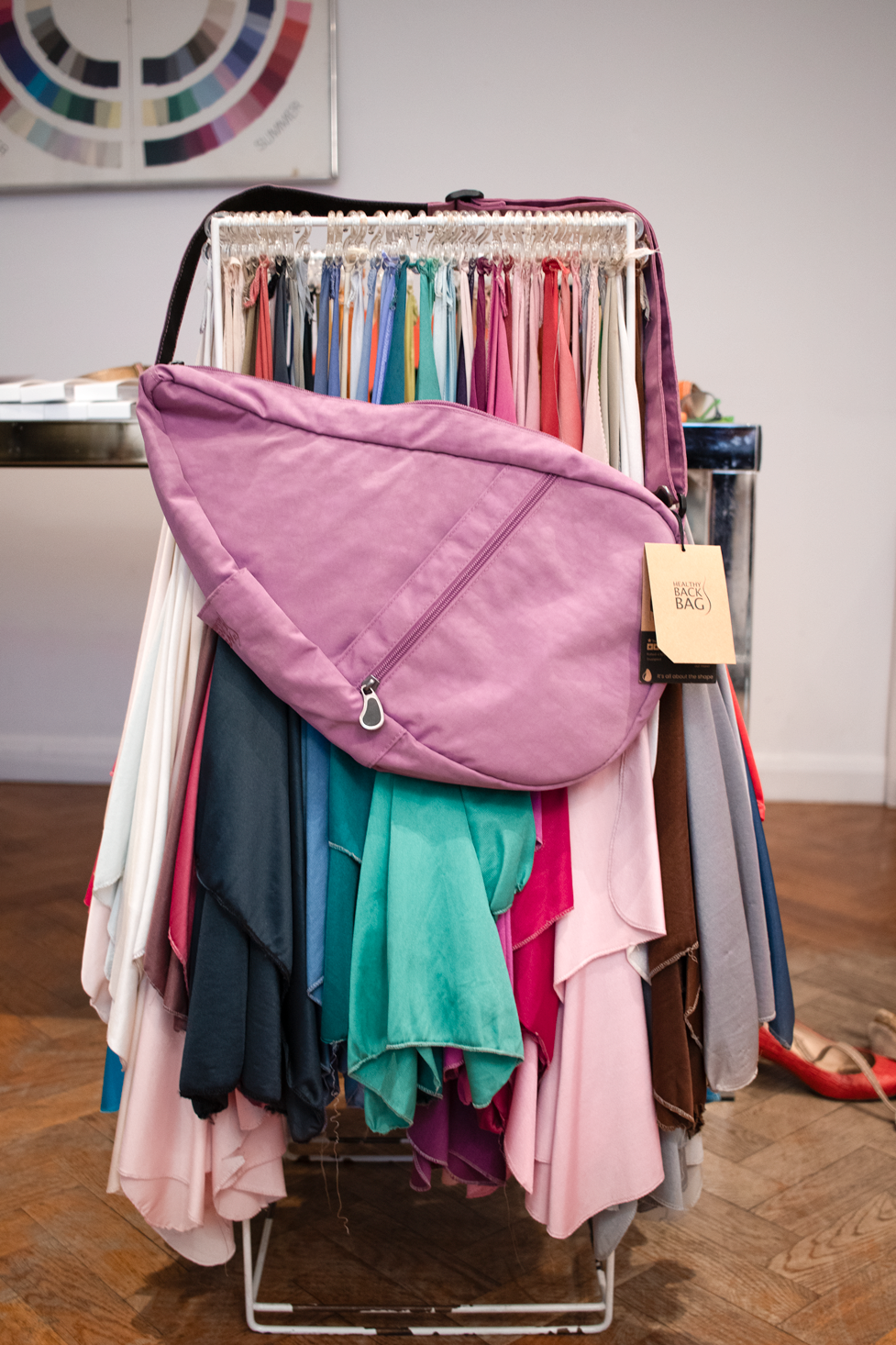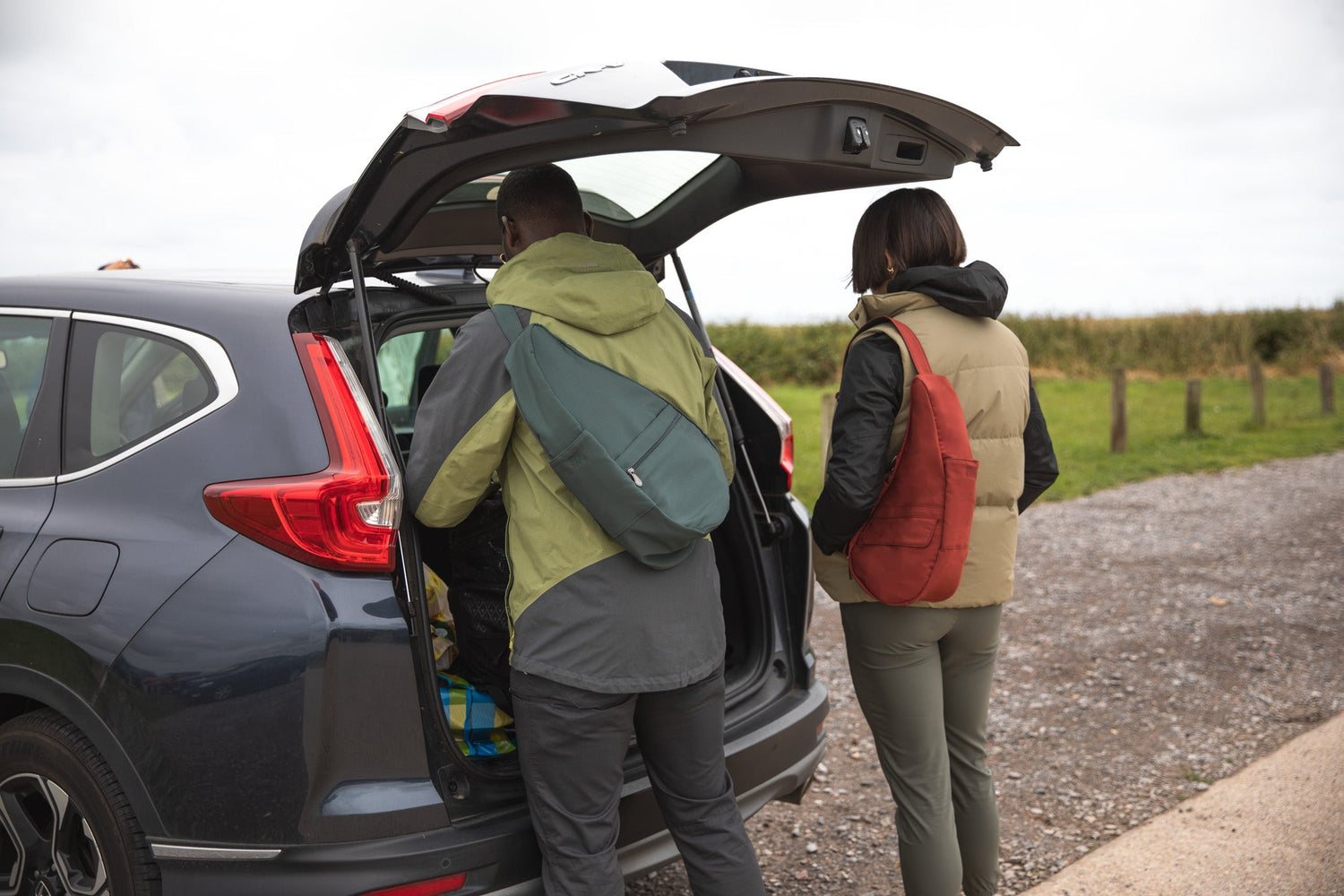Packing for a trip, whether it’s a weekend getaway or a longer adventure, often begins with a familiar challenge: how do you fit all your favourite outfits, essentials, and travel bits into one backpack without overstuffing it?
When it comes to clothes in a backpack, it’s not just about what you take, but how you pack it. Making the most of your bag’s space is key, especially when every item has to count. A well-packed bag not only holds more, but it also helps you stay organised on the move, meaning less rummaging and fewer frantic repacks.
It can be tempting to pack several outfit changes ‘just in case’, but fewer, versatile pieces reduce decision fatigue while also lightening the load on your back. And that’s where the ergonomic design of the Healthy Back Bag comes into its own, offering support, style, and lots of space, all without compromising your comfort.
In this blog, we’ll share smart, practical tips on how to fit more clothes in a backpack. Helping you pack better, not just lighter.
The Roll and Fold Technique
One of the easiest ways to save space and prevent wrinkles is the roll and fold technique (sometimes called the army roll). It’s especially effective for soft items like t-shirts and shirts and it allows your clothing items to slide neatly into bag compartments or stack like building blocks in packing cubes.
How to roll a t-shirt or shirt:
-
Lay the shirt flat, face-up, and smooth out any wrinkles.
-
Fold in the sleeves towards the centre.
-
Fold the bottom of the shirt up about 7–10cm to create a lip.
-
Fold each side of the shirt in towards the centre, forming a long rectangle.
-
Roll tightly from the neckline down towards the folded edge at the bottom.
-
Tuck the rolled shirt into the lip you created to keep it secure.
Repeat the same process for casual tops, gym wear, or sleepwear. Rolled items take up less space when rolled and can be tucked into the pockets of your Healthy Back Bag with ease.

![]() Bundle small clothing items together
Bundle small clothing items together
Some things are just too small to roll but grouping them together can be surprisingly effective. Here’s how to make mini bundles of your small clothing items, keeping them tidy and easy to access:
-
Socks
Lay one sock over the other, roll from toe to cuff, then pull the outer cuff over the bundle to secure it. -
Underwear
Fold in the sides, roll from waistband to gusset, and stack neatly. For briefs, roll tightly into a mini parcel. -
Scarf
Fold lengthwise if wide, then roll from one end. Soft scarves can also fill small gaps between cubes. -
Vest (tank top)
Fold sides in to make a narrow strip, then roll from the bottom up. Lightweight vests are ideal for filling unused space.
These bundles fit neatly into corner spaces or zipped interior pockets, helping to maximise space and reduce clutter.
Fold skirts, jeans, and dresses to maximise space
Not everything should be rolled: heavier or structured clothing items, like jeans and formal wear, tend to fold better and prevent wrinkles. Here’s how to fold some of your bulkiest pieces:
-
Jeans
-
Fold in half lengthways (one leg over the other).
-
Smooth flat and fold once or twice horizontally, depending on space.
-
Place at the bottom of the bag or in a packing cube.
-
-
Dresses
-
Lay flat and fold sleeves inward.
-
Fold lengthwise into thirds, then in half from top to bottom.
-
For formal dresses, use tissue paper between folds to reduce creasing.
-
-
Skirts
-
Fold in half width-wise, then again depending on length.
-
Lightweight skirts can also be rolled and tucked into side compartments.
-
These techniques help distribute bulkier clothes evenly and stop your backpack from becoming too bottom-heavy.
Squeeze more in using compression cubes
Compression cubes are a smart way to get even more from your Healthy Back Bag – especially when you need to carry bulky clothes like jumpers or jackets. Unlike regular packing cubes, compression cubes have a second zip layer that removes excess air, allowing you to flatten your bundle and save space.
You’ll be surprised how much fits when air is removed. Just remember not to overfill, so you maintain the ergonomic benefit of carrying a lighter, better-distributed load.
Pack toiletries and other items in packing cubes
Not to be confused with compression cubes, standard packing cubes help you separate your essentials into categories: toiletries, electronics, accessories, and shoes. They don't squeeze air out, but they do stack efficiently and allow you to use the larger compartments in your backpack with greater ease.
Clear or colour-coded cubes also make finding what you need quicker, no need to unpack everything to get to your toothbrush.
Fit more using strategic pockets and bag compartments
This is where the Healthy Back Bag really shines. Designed with thoughtful internal organisation, HBB bags come with strategic pockets that help you place your clothing items, and keep them there.
-
Use side and outer pockets for rolled t-shirts or vests.
-
Tuck bundled socks and underwear into internal corners or mesh pouches.
-
Store heavier folded items in the main compartment near the centre of your back for better balance and less strain.
These features allow you to pack smarter and still maintain the HBB’s signature balance and ergonomic support.
Take more clothes without compromising your back health
With the right packing strategies, from rolling your clothes to using the Healthy Back Bag’s ergonomic layout - you can travel with everything you need without straining your shoulders or back.
Ready to take more with you, more comfortably? Explore our Travel Crossbody Bag collection and see how to fit more clothes in a backpack, with none of the compromise.






